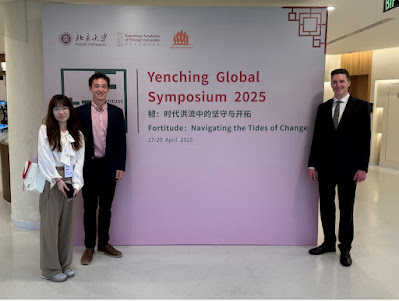The inaugural HNC-in-the-World trip, a Hopkins-Nanjing Center initiative to explore China’s global relations, HNC-in-Peru was held during the center’s Spring Break from April 1st to April 10th. Co-Director Webb, accompanied by 7 students, including myself, led a research and study trip across Lima and the highland village of Morococha (old and new) to answer the question of what China’s relations in the world look like, via a case study in Peru.
Studying topics of culture, diaspora, mining, industry, development and politics, and interviewing individuals from all aspects of Peruvian society - from the heads of NGOs and the holdouts of the abandoned Morococha mining village in the highlands, to the leaders of mining companies and Peruvian diplomats - students left the trip with a foundational understanding of both Peruvian society and China’s growing role and influence on it.
A nation with a strong democratic civil spirit, the people of Peru are quite disillusioned with their government, with the last five presidents of the nation having been forcibly ousted due to corruption and civil dissatisfaction. However, rather than nearing a revolution, the recent history of the violent Peruvian Civil War (1980-2000) leaves the population pushing strongly for reform in political processes. Students encountered this spirit firsthand on April 5th, 2022, when Lima (along with other cities) was forced into a sudden state of emergency, with a curfew imposed.
Starting at 2am the morning of April 5th, we weren’t even aware that martial law was in place until we were informed by the hotel staff and subsequently looked into it ourselves. With the only English-language source mentioning the state of emergency being a short article from the Associate Press, we turned to local Peruvian news for updates on the sudden restrictions on the city we were inhabiting. The death of 4 protestors (protest in part due to rising inflation, among other social issues) led President Castillo of Peru to call a state of emergency and a curfew for a bit under 24-hours, restricting everyone in Lima to their homes, in an attempt to quell the growing civil unrest. At-a-glance, the streets looked empty and the city was quiet. We ate breakfast and lunch in the hotel and had all of our meetings on Zoom, refreshing the local news to keep up with the live updates. We started reading the reports of protest around the city and down the street from our hotel, which were rapidly growing in number. The people of Lima were enraged that economic activities were being halted when a primary concern of the protests was inflation and wages. Particularly in the context of Peru, a country whose informal workforce accounts for over 70% of working peoples, a day inside can seriously impact their already fluctuating wages.
And so people took to the streets in red and white, the colors of the Peruvian flag, demanding the end of the martial law order immediately, as well as the resignation of President Castillo for making such a decision (which was deemed unconstitutional later that day). At approximately 5pm, many hours before the originally announced end of the order, the curfew was lifted. Curious, we left the hotel to see what the bustling city looked like post such an occasion, finding all of the shops closed, people in red and white walking the streets, singing and chatting in the parks, and people spending the evening on the nearby beach. It was a small victory for civil society in Lima.
The following day, April 6th, on the way to another meeting, we saw some of the more destructive aspects of the protest, such as broken windows on federal buildings, but by-and-large reports showed that the protests were mostly peaceful, as is common for protest in Peru. While a jarring experience (we had a few emergency plans in place in case of escalation), it lent just a bit more to our understanding of the Peruvian people.
Written by Rebecca Ash-Cervantes





